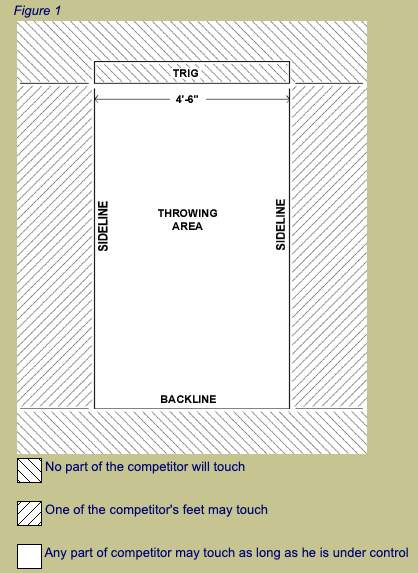Understanding the Rules and Scoring in Highland Games: A Guide for Amateur Competitors
Stepping onto a Highland Games field for the first time can feel intimidating. With so many events and unique rules, it’s easy to feel lost. This guide will break down the rules and scoring for each event so you can focus on competing with confidence.
The Scoring Basics
Highland Games scoring is straightforward but differs by event type:
Distance Events: These include stones, hammers, and weights for distance. Throws are measured from the center point of the throwing Trig (the toe board at the front of the throwing area) to where the implement lands. The farthest valid throw wins.
Height Events: Weight for height and sheaf toss are judged by the highest successful clearance. Athletes are eliminated if they fail three consecutive attempts.
Caber Toss: The ultimate crowd-pleaser! Scoring is based on how straight the caber lands after a flip. A perfect score is 12:00 (straight up). Judges also evaluate your control and technique during the run-up and toss.
Common Rules Across Events
While each event has specific rules, these general guidelines apply:
Stay Within the Throwing Area: One foot must remain in the throwing area at all times. The other foot may land on or outside the sidelines.
Control Matters: You must demonstrate control over the implement at all times. Dropping or fumbling may result in disqualification.
Re-Starting: If you wish to restart your throw once initiated, you must maintain complete control of the implement and come to a complete stop within the throwing area. You must ask the judge to reset, if allowed you can then restart the throw.
Pro Tips for Success
Practice the Fundamentals: Learn the safe and proper techniques for each event both to avoid injury
Focus on Form: Perfect form beats brute strength. Mastering the right angles, spins, and release points can make a huge difference.
Expect Inconsistency: Each games, Athletic Director, or individual judge may have different interpretations of the rules. Pay attention to their instructions and ask questions if you are unsure. .
For a more complete explanation of the rules for each event, you can visit NASGA or Wikipedia. All games with amatuer classes should hold a Rules & Safety meeting directly before the first event, make sure to attend and pay attention.
Image: NASGA

